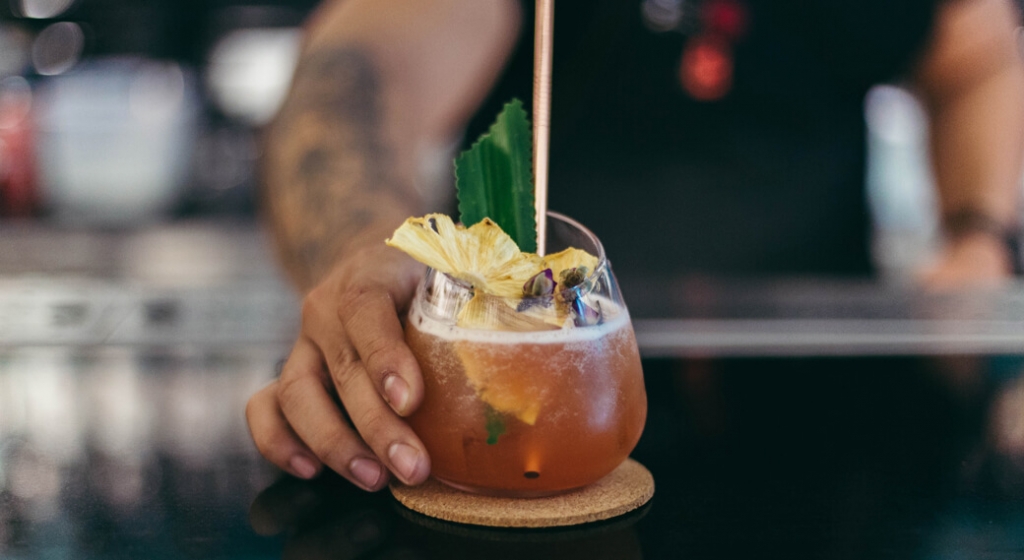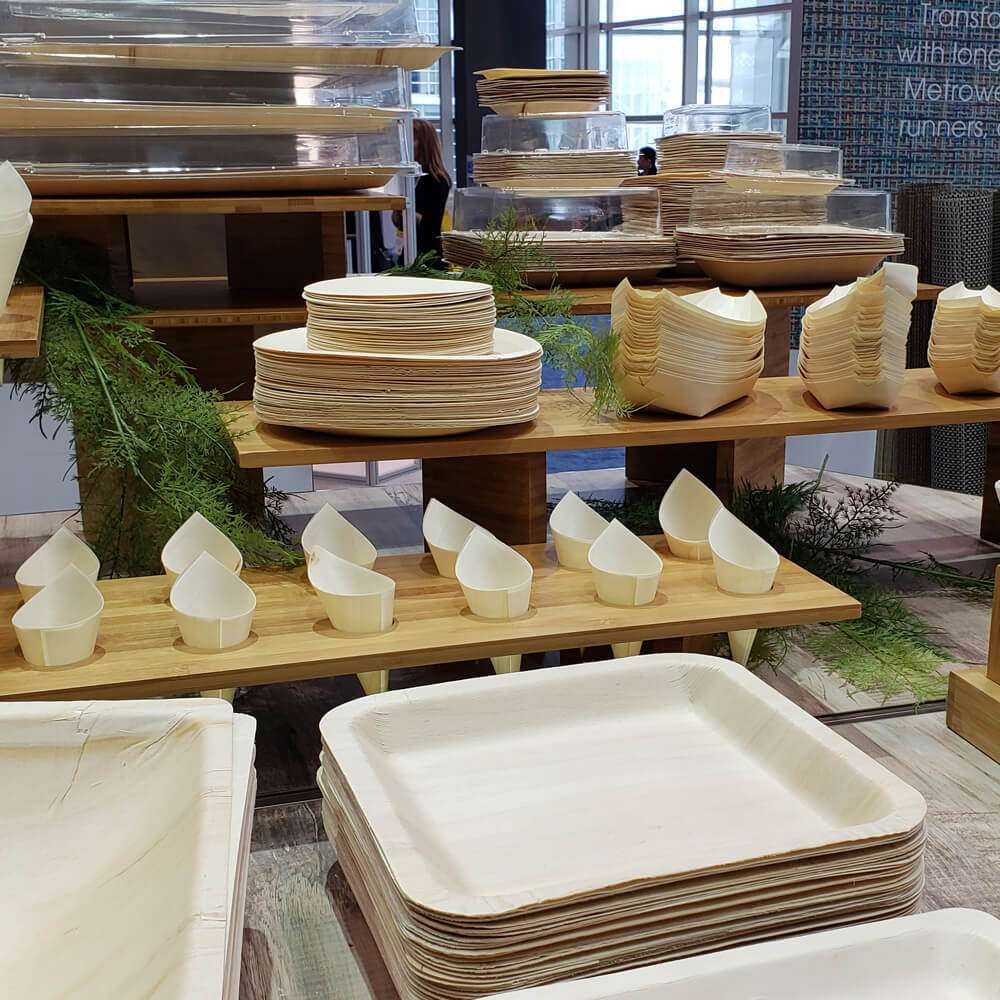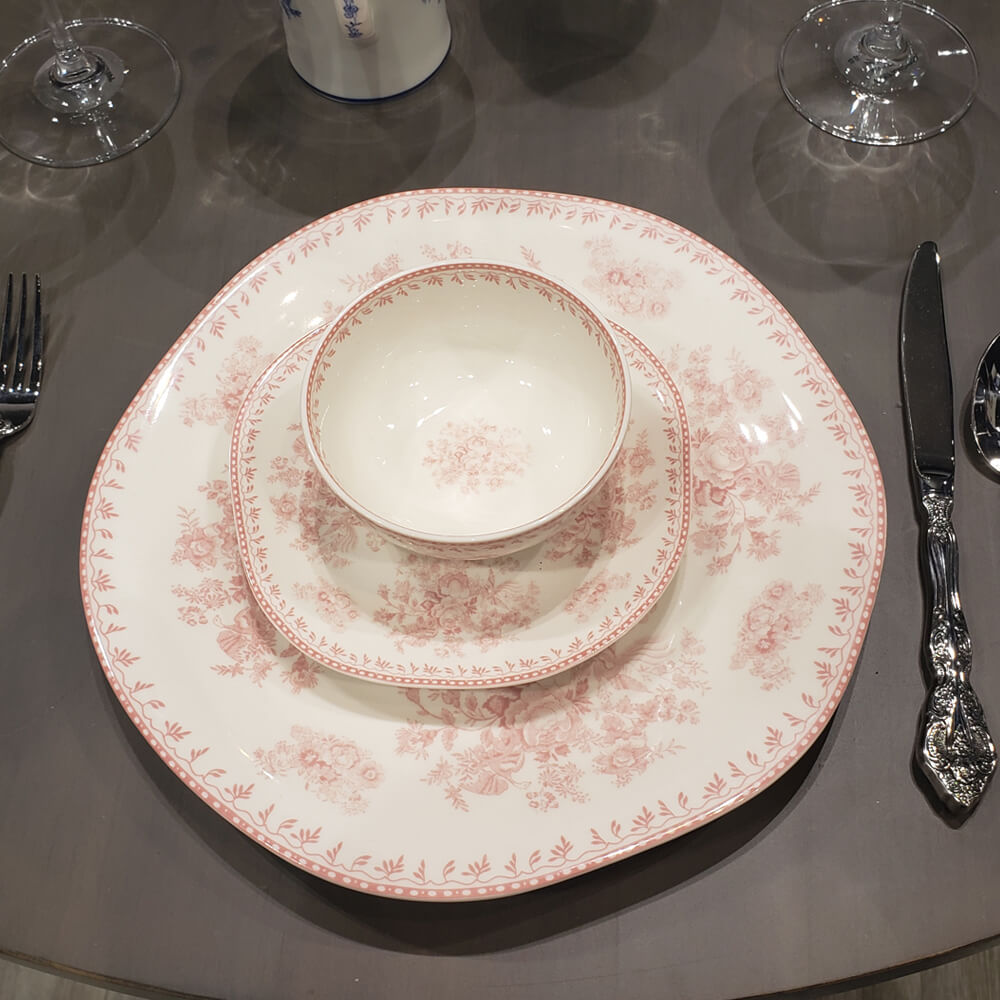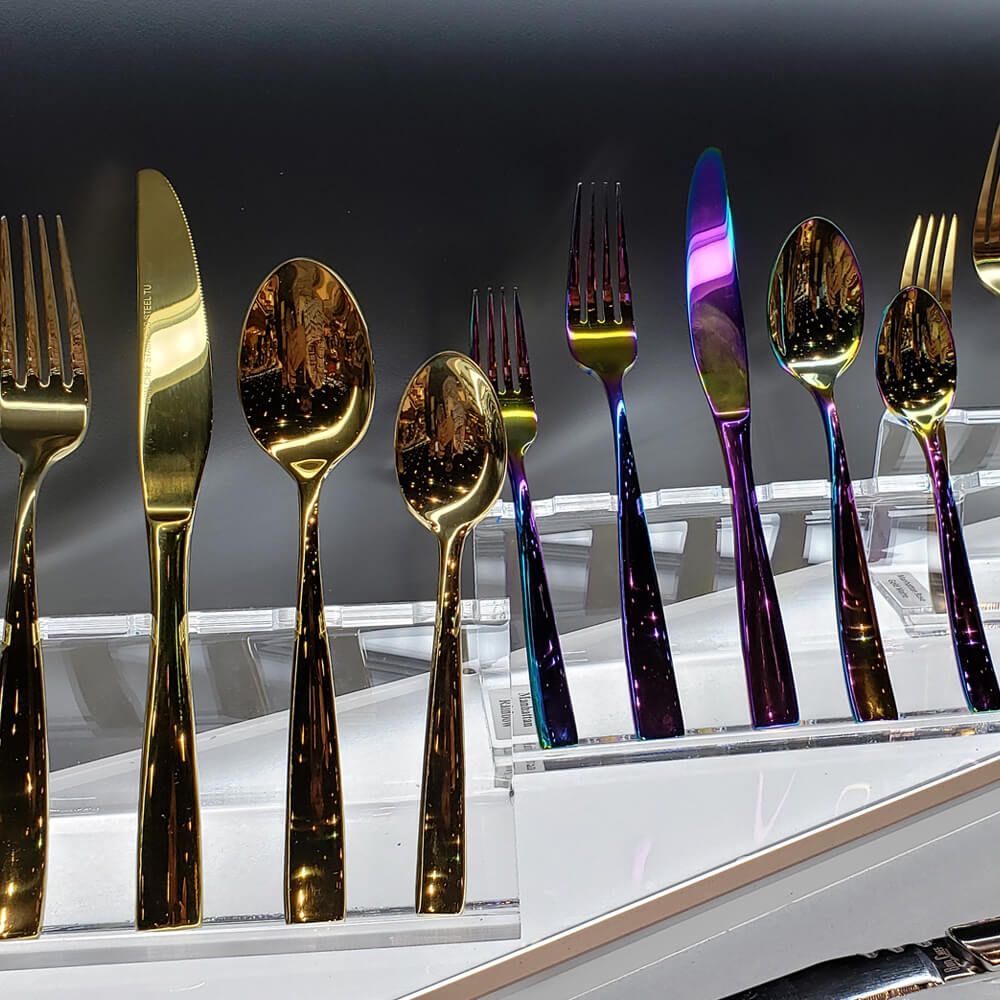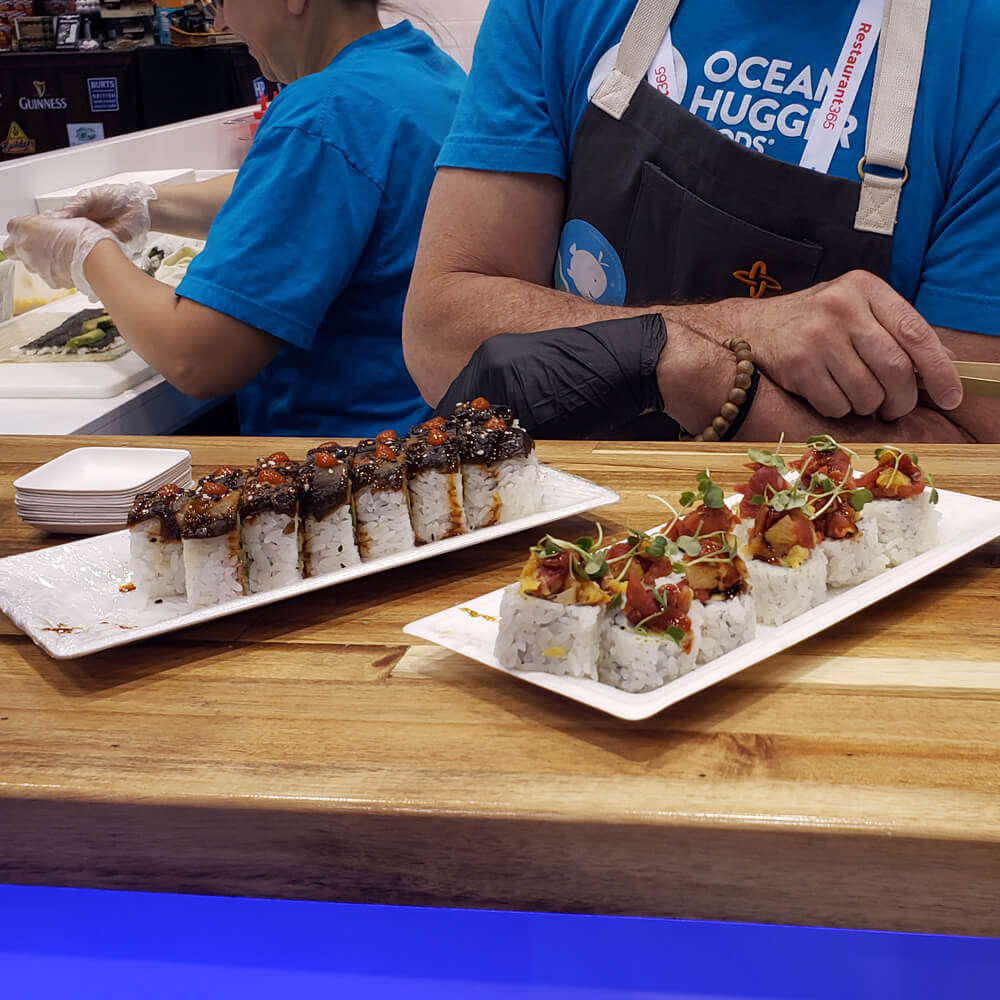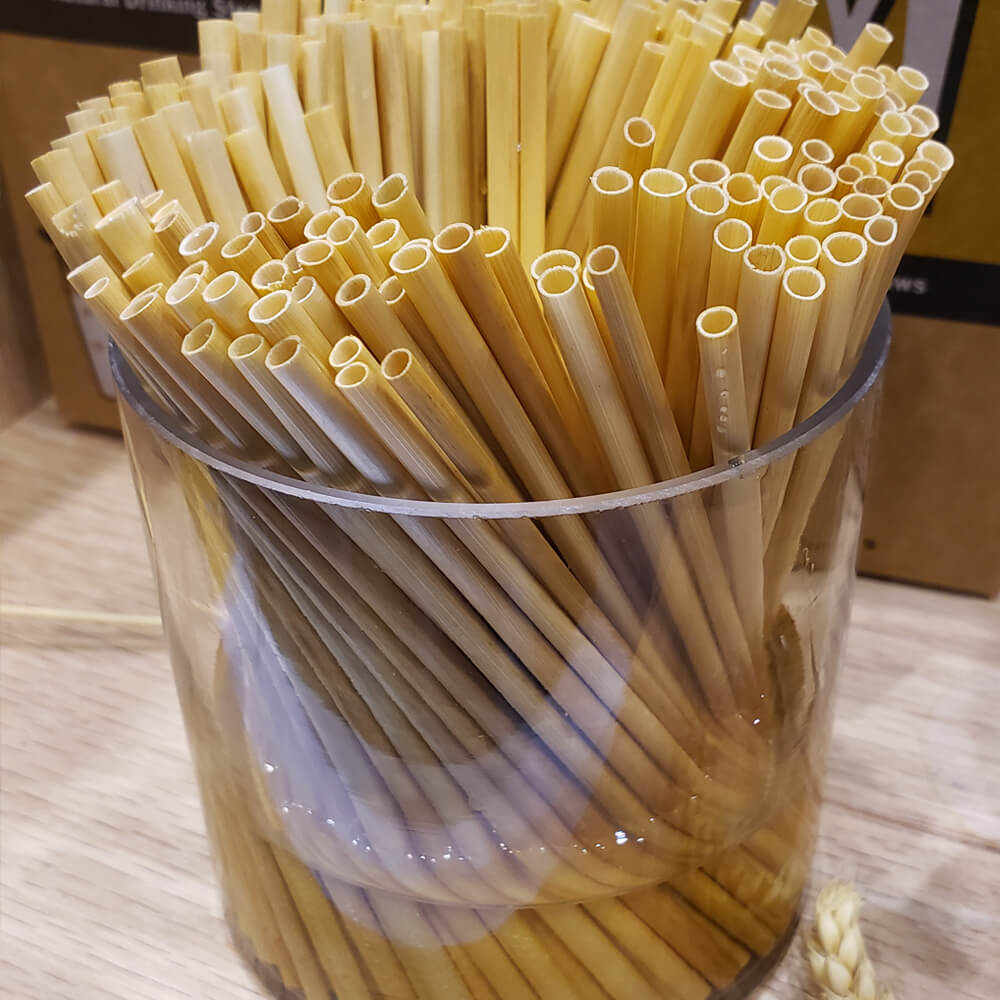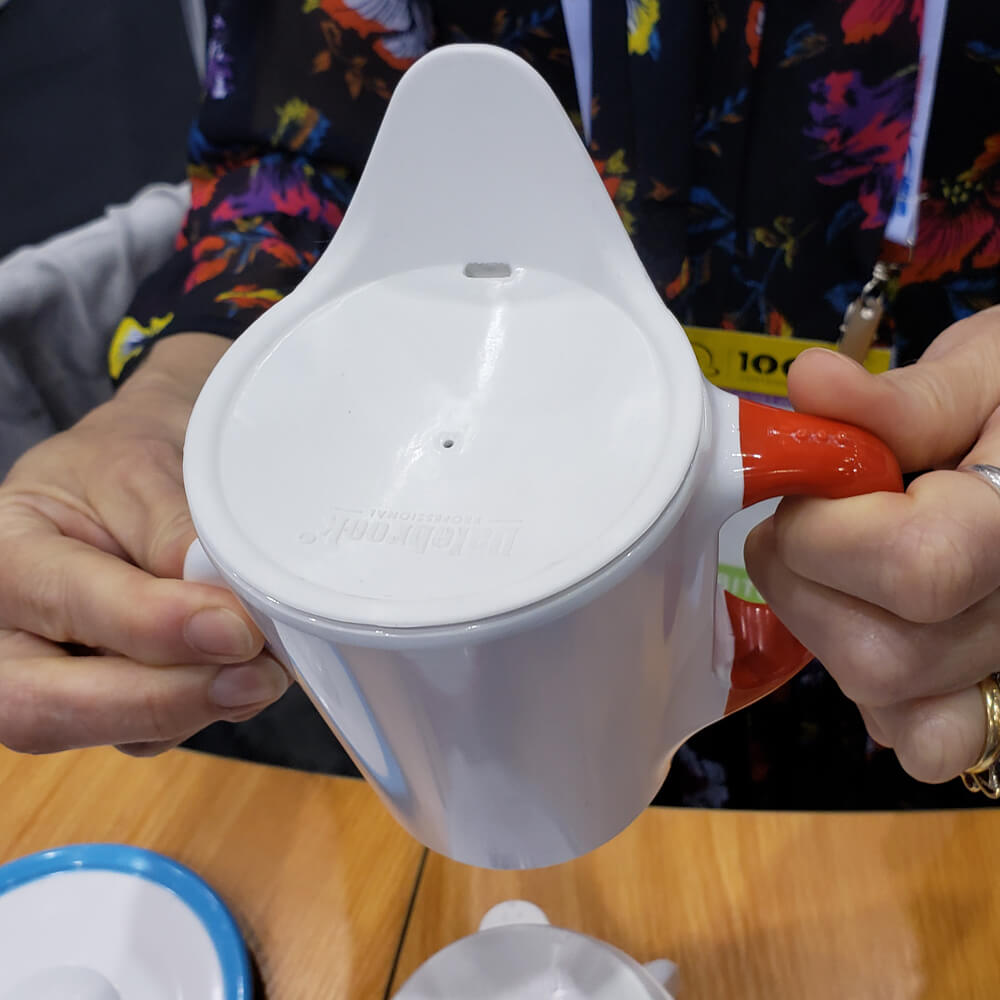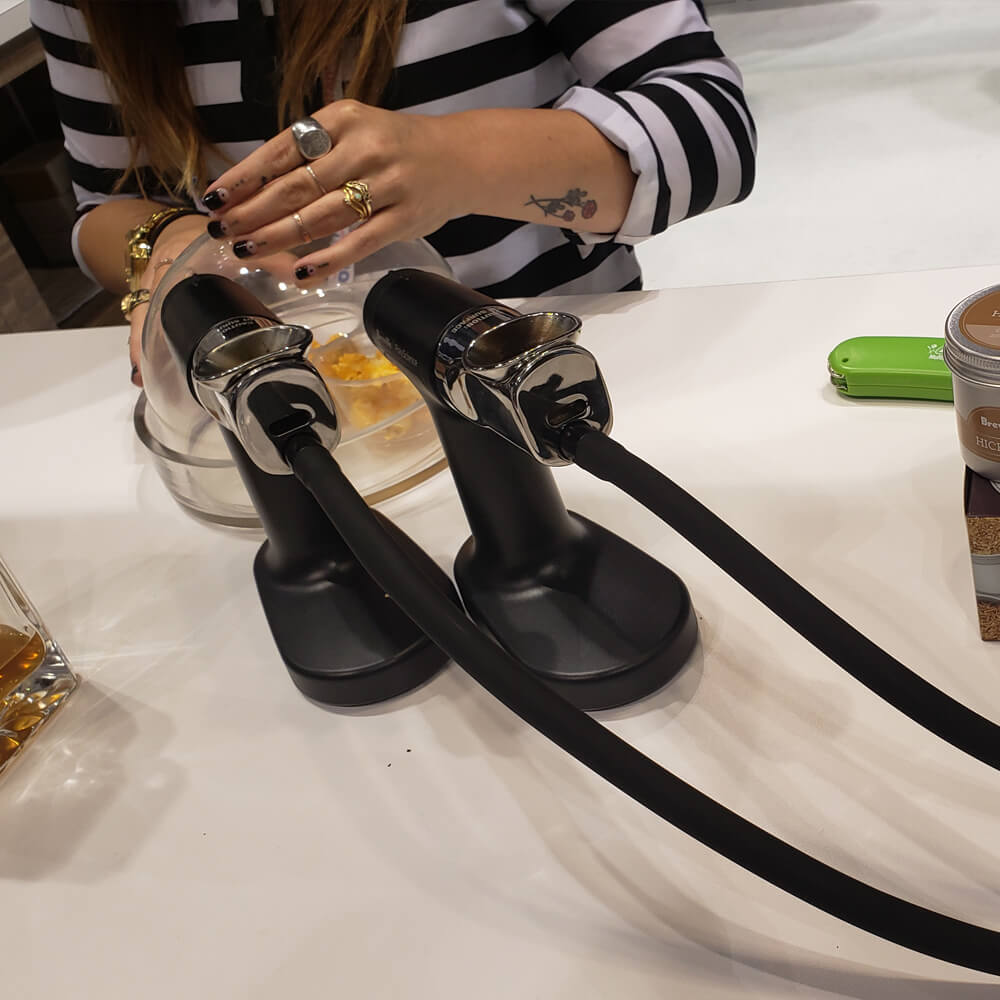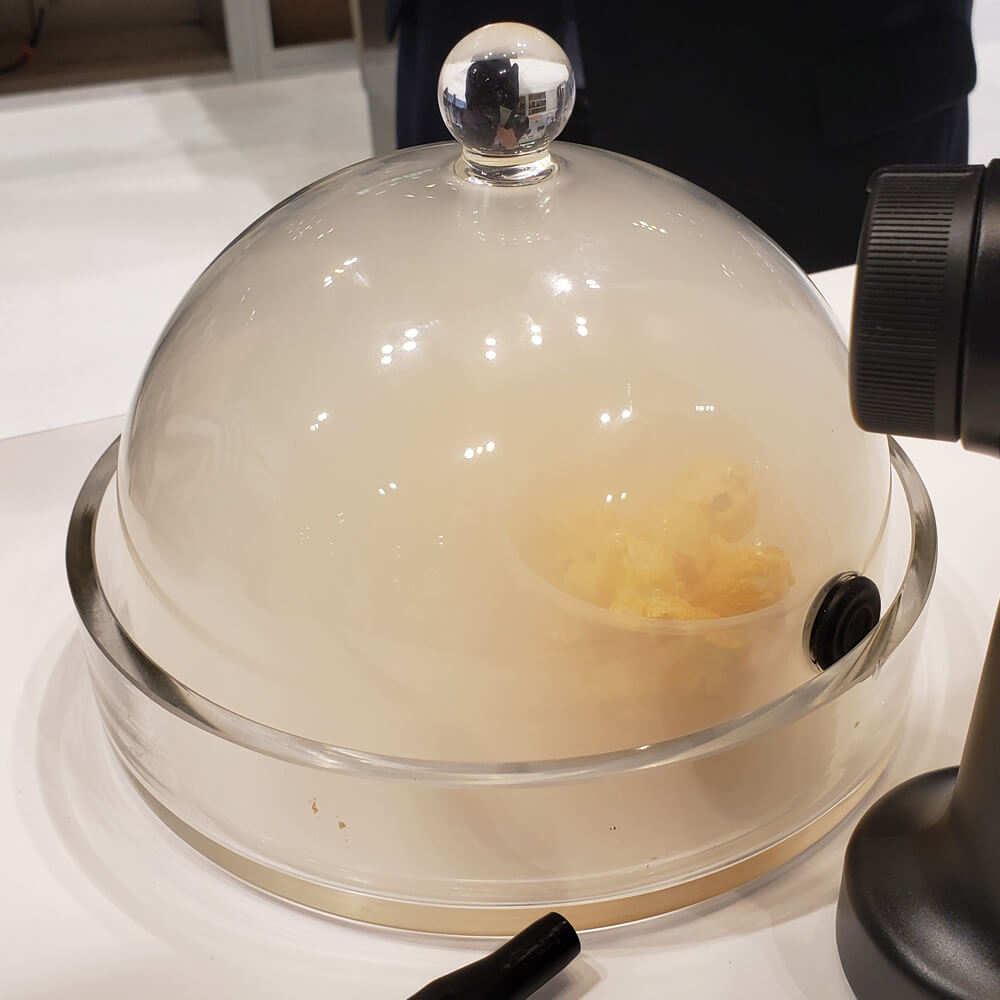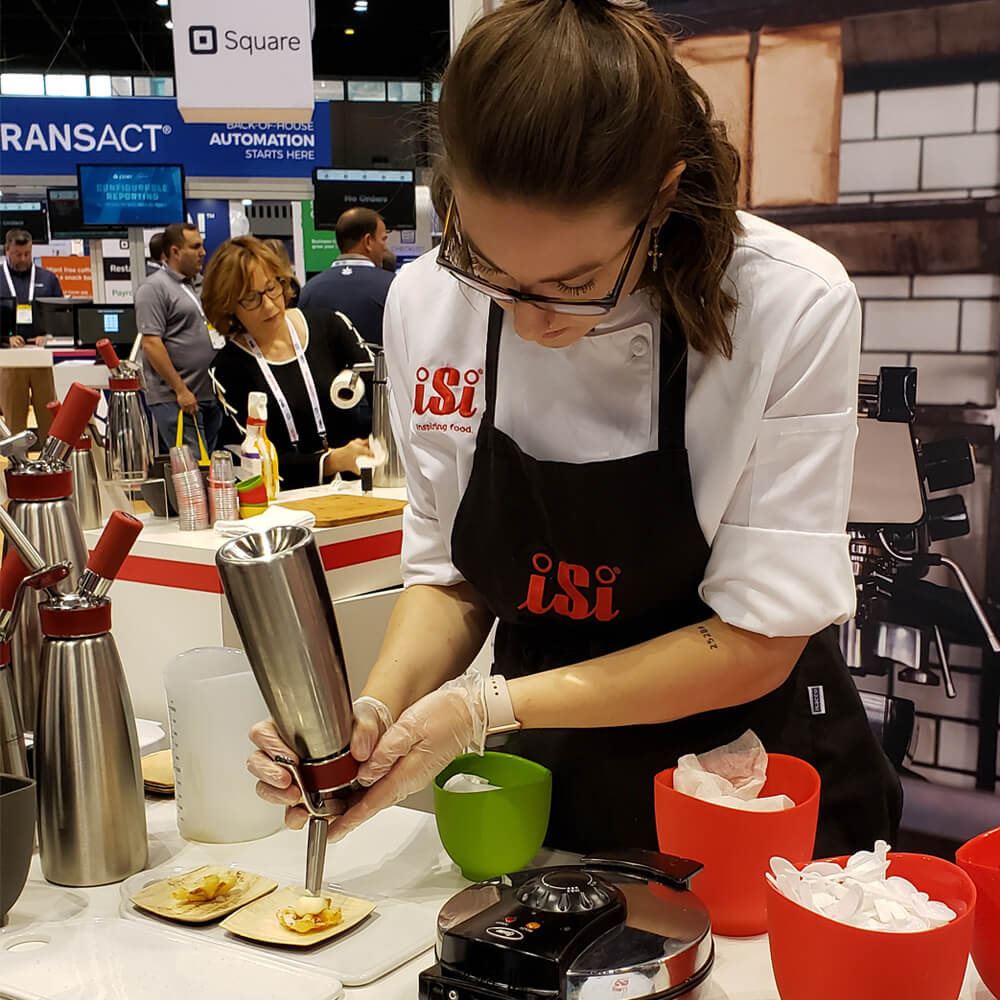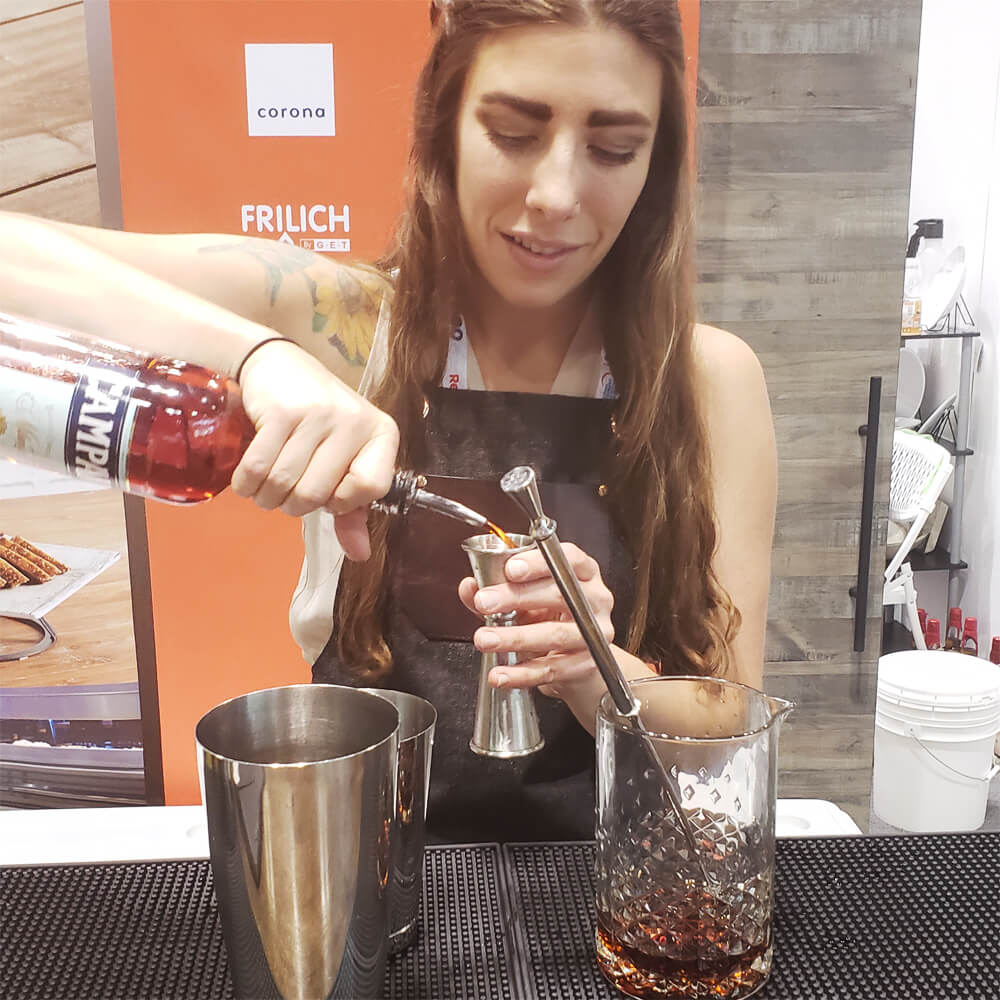The National Restaurant Association Show hit its 100 year anniversary with a monumental expo in Chicago featuring nearly 2,500 exhibitors and 43,000 attendees. From exciting new equipment demos, to scrumptious food tastings, to influential speakers & celebrity chefs – the National Restaurant Association show unfolded the many intriguing and unexpected trends of the culinary world.
Walking the show floor this year was none other than one of your dear Wasserstrom Blog editors. Fueled by countless plant-based food samples and a shocking amount of cold brew, this editor spoke with several culinary professionals, asking what trends they are seeing in the restaurant industry today. Here is what some of them had to say –
Rosie Cowell, Pastry Chef
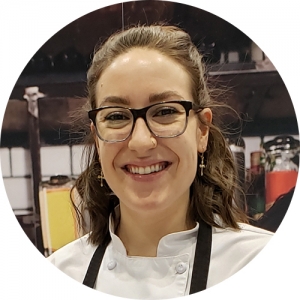
What trends are you seeing as a Chicago-based pastry chef?
The trend I’m seeing right now is seasonality. I think people are finally getting back to cooking in season. Especially in the USA, we have so much product availability all the time, we can order anything without thinking about about where it comes from and if it’s in season.
In Illinois and Chicago I’ve seen pastry chefs get back to only using what you can get from your local purveyor when it’s available. So today I made sure I’m only getting ingredients that are seasonal. Rhubarb, corn, blueberries. Using lots of locally sourced Illinois crops too, which is nice.
Another trend I’m seeing is getting away from the 80’s and 90’s typical pastry chef style. We’re done with hippenmasse tuiles. We’re done with having two sauces on a plate. We’re done with formulas. If it doesn’t make sense, you don’t put it on the plate.
For example, I had this pastry chef who would yell at me, saying, “Where’s your two sauces? Where’s your tuile?” And I said that it doesn’t make sense – and he would ding me points from that, yet I could have a phenomenal dessert. It just didn’t fit what he thinks a typical dessert should be.
So we’re kind of moving on from the old chef style – and good for them, they made it work – but the trend I’m seeing is seasonality and making sure what goes on the plate makes sense.
Miranda Breedlove, Bartender

You’re a world-traveling bartender serving Sidecars and Manhattans to all walks of life. Are you seeing anything that bar-hoppers should know about?
From a bar perspective, we’re talking about sustainability a lot more in a worldly sense but also in a human sense. There’s a shift into drinking less and taking care of yourself – body and mental health.
There are groups coming out built by bartenders that are using nonprofit systems to do trainings and mental health awareness. People are winning big competitions by making their drinks incredibly sustainable and using all of the things involved in it.
A lot of big brands are going away from using straws and things that are wasteful and hurt the environment. It’s all about reducing waste in general – anything we can do in small parts is helpful.
I’m also seeing low-ABV (low Alcohol By Volume) cocktails and spritz-style drinks in bars. Places are opening with completely low-ABV menus.
Why go low-ABV?
It’s a more sustainable way of treating yourself. There’s a restaurant in Chicago reopening called Bad Hunter – and when they opened originally there was nothing high-ABV on that menu. The whole concept of that restaurant is that it’s more vegetable-centric – so you can eat a whole meal there and not feel like you missed out on meat. But also leave a restaurant in the West Loop (of Chicago) and not feel like you need a wheelbarrow to get yourself home. By enjoying a lite, vegetable-centered meal paired with a low ABV drink, you can go about your day afterwards without feeling weighed down.
We’ve heard that you prefer the term “Bartender” instead of “Mixologist” – why is that?
It sounds pretentious to say you’re a mixologist. It means the same thing. We all learn how to make drinks the best that we can and we all have access to the same equipment. Sometimes I wear an apron and sometimes I don’t.
I try to take the more serious side out of it. If anyone walks into a bar that I’m behind, I want them to feel comfortable, at home, and safe. A lot of people who define themselves as “mixologists” tend to be the ones who are much more buttoned up and like, “You’re in my world now!” and that’s just not the way I see the industry.
I don’t have a problem with them, it’s just not the way that I bartend. I have close friends who refer to themselves as mixologists and I have friends who will hit you in the face if you call them a mixologist.
Aside from calling yourself a “mixologist”, what’s the biggest mistake a first time bartender can make?
I’ve seen a lot of newer bartenders think that they know way more than they do and take on bigger projects than they’re ready for, which leads to a lot of failure and problems.
I think just the concept of realizing that nobody in this industry will know everything. And the best way to grow is to just keep trying to seek out that knowledge and learn from each other and not be a cocky jerk about anything.
Follow Miranda Breedlove on Instagram »
Aidan Altman, CEO & CoFounder of Fora
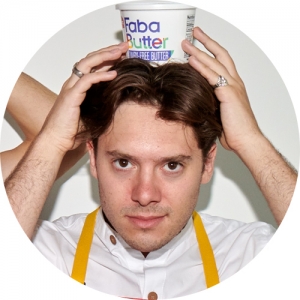
Plant-based foods are growing at an extraordinary pace and your company is leaning into that. What are the most recent developments in this movement?
I think that we’re in the next phase of plant-based food. The best products are the ones that are indistinguishable from their animal-based counterparts. You have to deliver on everything: functionality, taste, price point, and nutritionals.
First you have the vegan products – we all know they don’t taste quite as good but they paved the way for the plant-based movement. We kind of did away with the word “vegan” – it’s “plant-based” – which has a more mass-market appeal. The products today are a lot better and they’re only going to get better.
We all know we have this existential threat to the planet with industrial farming, a growing population, global warming – how are we going to feed all these people without destroying a lot of the ecosystem? Plant-based products will help bring about a more sustainable food system on a holistic level.
What do you think about the craze around Impossible Burger?
They’re a huge influence for what we’re doing. The reason I got into this business was because of what Impossible and Beyond Meat are doing and we thought there needed to be something like that in the dairy space – specifically in butter, which is a huge global commodity product with a $30 billion dollar market, so it’s ripe to be innovated.
Where does FabaButter fall into this next phase?
Our butter, we think, is the first product that’s going to be able to really compete with commodity dairy butter at a global scale. We have fully scalable ingredients. We can make capacity for millions of pounds a year at our plants. We’re already selling nationally in the US and Canada and Asia.
People want this product because of the integrity we deliver in terms of our likeness to dairy butter but with added benefits of a higher smoke point and a longer shelf life.
What problems are you solving with FabaButter?
The biggest thing for us is that industrial factory farms are hugely unsustainable and very bad for the environment in terms of the amount of methane they release from all the cows – and the water and land and food that goes to raising the animal in order to get an end product.
We’re making the manufacturing process more efficient. Less calories in for more calories out. It’s a simple thing, moving the industry forward. More sustainable, cleaner, better functionality, same commodity pricing as real butter.
If you’re delivering the exact same product – and we do blind tastes of our butter vs dairy butter – why would you choose the one that costs same but is less sustainable?
Joshua Smith, Executive Chef & Restaurateur
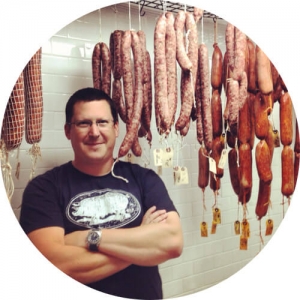
What trends aren’t your customers seeing happen in the back-of-the-house?
We need to figure out how to streamline and how to simplify what we do in the kitchen. We have to change the complicated recipes and the menu offerings and try to dial it back.
Using equipment like Rational and Cvap and working with KitchenAid and figuring out ways we can automate and streamline the way that food is prepped in a kitchen because with labor costs going as high as it is – it’s becoming very cost prohibitive to have those teaching environments that we’ve – like myself being in the industry 25 years – thrived in and really enjoyed. And now it’s changing a lot because you’re not getting people who want to come in 2-3 hours off the clock and do a project and do some of these things.
Some of these amazing dishes that we’re doing in the restaurant take a lot of additional time besides just setting your station and getting ready. And then the typical prep group, which usually doubles as the stewarding staff, which usually are the ones getting the majority of the herbs and everything else.
So any way to automate what we do – whether it’s using PolyScience, an immersion circulator, or a hot mix, or some sort of thermal mix where you have a predetermined recipe and you’re just scaling out the mise en place where they’re just following step by step.
I had a young cook in his late 20’s who worked for me, running the brunch and he did a really great Hollandaise sauce. I watched him make it one day and saw that it wasn’t any way like I had ever learned. I learned over a double boiler over a stove and you just work it really quickly. He did it in a blender, he did it in our KitchenAid blender – and at first I thought there was no way he could do it – but it was unbelievable.
There’s a positive side to where they’re teaching us older guys ways to rethink the way we do it. Which is hard because when we were taught, it was pounded into our head. It was super aggressive! You would never break those rules but now you have to rethink of the way we do things.
What’s your favorite high-tech piece of equipment to use?
From experience, using one of my favorite tools is the Cvac. We had a beautiful wood fired rotisserie and we would take the chickens off and be able to bring them up to 130°, put them in the Cvac, bring them up to 155°, pasteurize it, and then lower it back down to 131° and hold it safely throughout service and then just flash it back on a wood fire. It was awesome and very different. Those tools weren’t as available or even known as much.
I know many chefs who are incredibly talented that came and did guest chef dinners in my kitchen and were really impressed by our use of technology and then started adapting it themselves to their kitchens.
Phones have been incredible – the amount of information that’s on these as a tool is amazing. You’re seeing applications coming out that help streamline a chef or a home cook’s life like probes that are Bluetooth compatible.
Some people say it’s bad because you don’t get those old school lessons but it’s good because as an entrepreneur and business owner, you sort of are narrowing down your margin. You burn three steaks and you sell twenty, you’re probably breaking even and you’re not really making money. And since we work on such razor thin margins, any time you can eliminate that margin of error is helpful.
Can you pass the costs of some of the automation onto the customers?
No, because there’s a perceived value. You’re only going pay so much for a burger, period. I don’t care how nice your restaurant is, I don’t care what your china looks like. Quality, environment – all those play a factor – but we all have a stomach or a threshold for what we’ll pay. As working individuals, we’ll pay $16 for a bowl of pasta, but we’re going struggle at $25.
At the end of the day, as the cost of the products increase, and the cost of labor increases, you have to cut somewhere but passing those costs onto customers isn’t the right way to go and I don’t think that’s where we are. People aren’t educated enough to understand the burden of what we face in the restaurant industry as entrepreneurs and restaurateurs.
Rosana Rivera, Chef & Entrepreneur
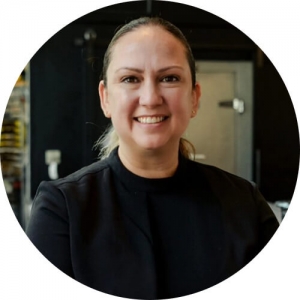 The trend of food halls is booming everywhere. That smaller sized format where you have a smaller investment up front is definitely attractive to operators like me. The biggest consideration is the space requirement and trying to squeeze two chefs in a 200 square foot space.
The trend of food halls is booming everywhere. That smaller sized format where you have a smaller investment up front is definitely attractive to operators like me. The biggest consideration is the space requirement and trying to squeeze two chefs in a 200 square foot space.
How do you deal with such a small space in a food hall kitchen?
It’s all about efficiency and investing in pieces of equipment that maximizes the skills you need while minimizing the labor.
Where I’m from in Tampa, Florida – getting highly qualified people is tough since there is so much competition. Culinary school graduates with a lot of talent are in high demand.
Because it’s so hard to get your hands on good talent, machines like this vector oven from Alto-Shaam help create the same high quality food every time with the push of a button. Our cooks and I don’t have to be in the restaurant right now because these machines can guarantee consistent food every time.
So for a food hall, it’s about doing as much as you can in a small space with fewer pieces of equipment – all while maintaining the quality of your food.
Yes, and being able to hire cooks with less experience to make the same food that we can put our stamp on is huge for me.

